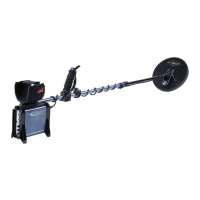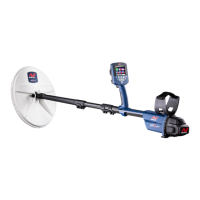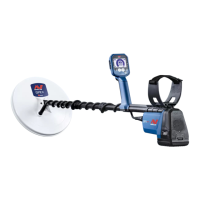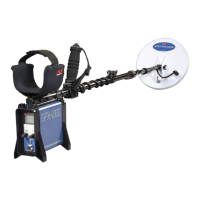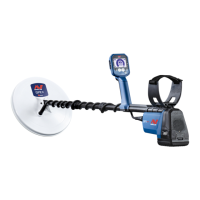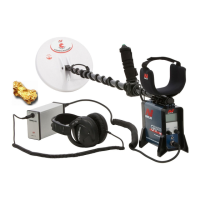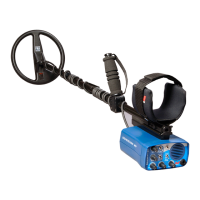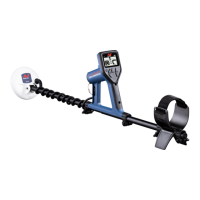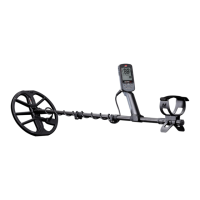PROSPECTING TECHNIQUES
The GP 3000 has superior ground balancing and it is possible to find quite large
objects near the surface in well-worked areas where other detectors have been unable to
cope with the high degree of mineralization and/or salt. Therefore the user should dig all
target signals, even in previously detected areas.
Very sudden or large changes in the mineralization of an area may
produce a signal from the detector.
In some goldfields, a response may be received from a concentration of
orange/reddish dyke material or clay.
If detecting areas of extremely variable mineralization, detecting with the
contours rather than across the changes will often stabilize the effect.
In some ground (particularly heavily mineralized areas) the operator
may need to sweep the coil 1 or 2 cm above the ground. This should
give a more stable threshold and less ground noise.
Charcoal may sometimes produce signals, similar to a metallic object,
when close to the surface. Charcoal is usually created by farmers
burning off tree stumps or by bushfires.
When the charcoal under the surface is disturbed, the signal will vanish.
If in doubt, scrape away some soil above the suspect signal; if the signal
gets stronger, it is likely to be a target. Dig it!
PROSPECTING TECHNIQUES
Keep the coil as close to the
ground as possible.
Listen very carefully - this is
more important than looking.
SLOW DOWN! Do not rush, take
your time.
For Maximum Gold Recovery
42
DETECTING
6

